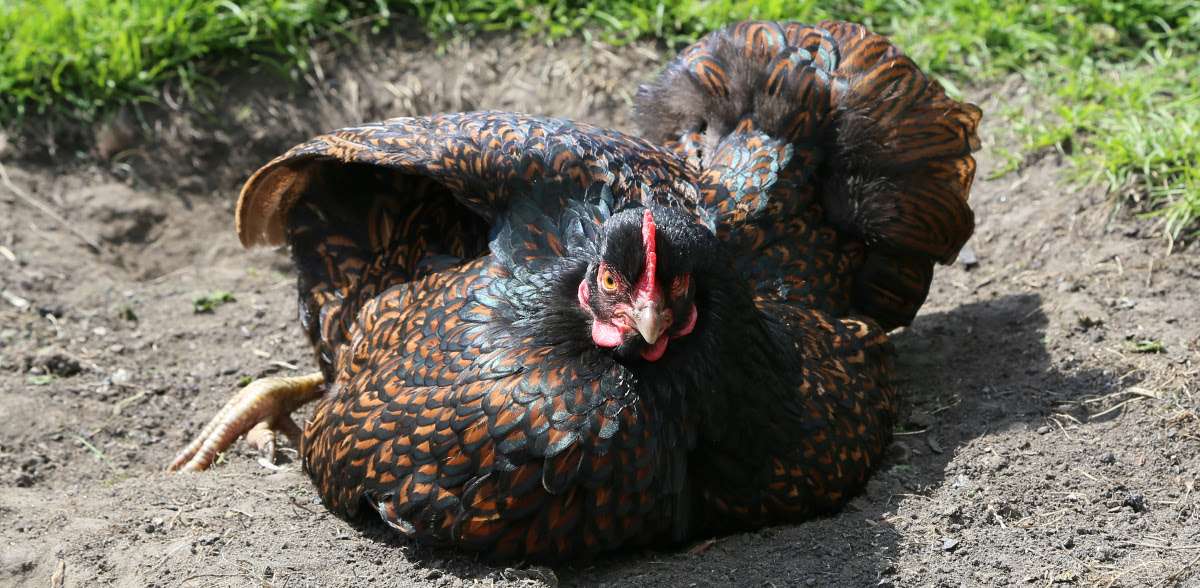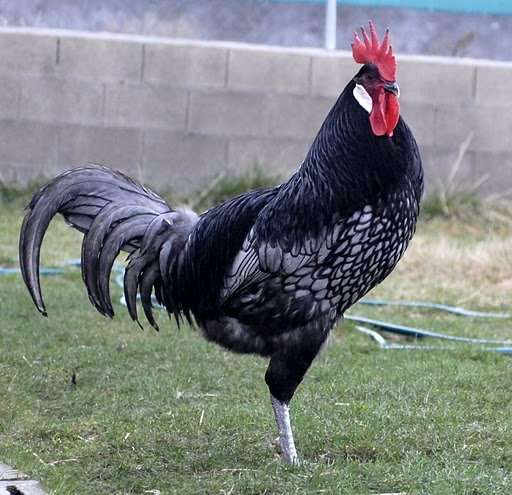What is a pure or heritage breed chicken

Heritage and pure poultry breeds go back a long way, The American Poultry Association (APA) started to catalogue chicken breeds in 1873.
For a chicken to be a heritage variety it must be:
- From a breed that was recognised by the APA before the mid-20th century.
- Reproduced through natural mating.
- Breed true to type.
Heritage breeds come in many sizes and shapes. The vast majority of the chickens that I keep are heritage types.
What is a pure or heritage breed chicken?
Purebred chickens or heritage breeds were developed through careful selection by small farms and breeders, or through natural intermingling between wild breeds or by unintentional selection for certain characteristics like egg production or hardiness.

Purebred or heritage chickens have a distinctive appearance, and are most commonly named after their particular place of origin. A Pure breed is a group of individuals that share the looks or phenotype and when bred together will produce offspring of the same type.
Pure breed chickens are what we typically think of as the traditional breeds. Typically, they have more personality, go broody more than hybrids and have a larger choice of size and plumage. Pure breed hens lay most eggs during the long summer days - unlike their hybrid cousins who are bred purely for egg laying.
Below: The blue Andalusian is a heritage or pure breed.

All fowl are made up from the wild or native originals that have been selected and bred for generations.
Examples of heritage breed chickens:
- Ancona,
- Rhode Island Red,
- Wyandotte,
- Sussex,
- Barnevelder,
- Jersey Giant.
We have detailed accounts of the Java and various other jungle fowl imported centuries ago into Europe from which are descended all the present known game birds.
Each of the above-mentioned modern styled varieties of chicken has been produced at some period, in a locality which gives it its name.
Why keep heritage chickens?
People choose to keep rare and heritage breeds because they like the look of them, or the characteristics of the chicken fits their location or circumstance.
- Heritage chickens prefer to free range,
- They are generally hardier than Hybrids,
- More likely to be broody and are better mothers,
- Heritage types are dual purpose and can be used for meat,
- You can display them at poultry shows,
- Live longer,
- Lay eggs for longer,
- Have a wider gene pool,
- Wide variety of eggs colours and sizes,
- Better foragers and tolerate a wide variety of foods.
I keep Barnevelders because they suit the cold location I live in while still laying good numbers of eggs in winter.
Below: Barnevelder chicks.
You also get multi coloured eggs from heritage breeds, there are very few commercial operations that produce deep brown eggs or green eggs.
Where do rare or heritage breeds come from?
Rare breeds are named after where the originate from so the Cochins and Brahmas from China, the Black Spanish and Games from Spain the East, or the Mediterranean, the Leghorns from Italy, the Houdans and Crevecceurs from France, the Hamburgs from Germany, the Dominiques from Holland, the Dorkings from England and the Bantams from Bantam, a city in Asia.
The rare breeds were, as a rule, produced for a reason, The diminutive Japanese bantam was bred to produce tiny eggs for the peasant classes as large eggs were the property of the emperor at the time.
Some chickens were selected for meat or because they looked amazing and could be shown off.
Why are heritage and pure breeds important?
Rare and heritage breed represent a genetic diversity which it is important to maintain. It is important to remember that every hybrid chicken bred today started life as a mix of rare breeds.
Naked Neck Transylvanian chickens were used in the production of modern broilers so as the birds have less feathers and are cheaper to process.
Below: Naked necks like this one were used to reduce the number of feathers on meat chickens making them cheaper to process.

Heritage and pure breed chickens are used
How were pure and heritage chicken breeds produced?
Rare breeds as we know them today came about as regional barnyard chickens were selected for their various traits over the years and eventually became regional standards.
The Barnevelder, for example, came about because the English liked brown eggs but didn't produce enough of their own. So they bred a chicken in the town of Barneveld that produced large brown eggs and kept laying well into winter. The eggs were exported to the UK.
These first birds weren't selected to have a standard size or feather pattern, it was their ability as egg and meat producers that were of primary importance. The feather, size and colour standards only came about after specialist breeders and fanciers got involved in exhibition fowl.
What is a pure breed?
A pure breed is a type of chicken, which produces its like in both sexes, when bred together, so every generation appears the same as the one before it.
All chickens may be improved by manipulation and through proper selection and mating, from year to year but these cannot be changed from the original acknowledged type, in any considerable way, without "crossing" or by the infusion of blood foreign into their line.
Below: Some of my heritage Barnevelders.
Since most of our modern poultry varieties are similarly "pure bred," and are made up in the countries they come from in a similar way, through skilful handling and judicious mating for points, for colour, for markings, for feather, for crests, for muffs, for combs, for fifth toes, etc.
Each variety is produced by artificial selection and breeding, and the term " pure breed " can simply be assumed in a comparative sense.
Can you create your own chicken breed?
Yes you can produce your own chicken breed. A cross between any two, three or four varieties, gives us a mongrel; and only mongrels succeed them in the progeny, for years afterwards.
The best, the strongest, the most perfect in markings bred from these, and still annually selected and cautiously mated, will give us nominally " new varieties ;" which in course of time can be brought down to a fine point in general exterior of fixed characteristics, which may warrant their being denominated " a breed."
Yet, like all others, they do not come absolutely uniform in plumage, in comb, in proportions, or in shape.
By careful selection afterwards from the progeny, breed only the best, again, of either sex. And thus we may continue to preserve the purity of the "breed" and help to improve the variety, from time to time.
Where to buy rare breed chickens:
Rare breed and heritage chickens can be difficult to find especially if they are rare. You may need to join the breed society or search out Facebook groups that specialise in the breed you are after.
You can try poultry auction, hatcheries and specialist breeders.
How much to pay for rare breed chickens?
Rare breed chickens are more expensive that hybrids, sometimes by as much as five times.
Rare breed chicken producers do not normally have the luxury of economies of scale or access to specialist chicken sexers so they are often sold straight run.
Expect to pay from $3 to $35 for a day old chick depending on the breed and from $35 to $200 for fully grown or point of lay birds.
Rare breed hatching eggs can normally be had from $1 to $10, again it is breed dependant.
